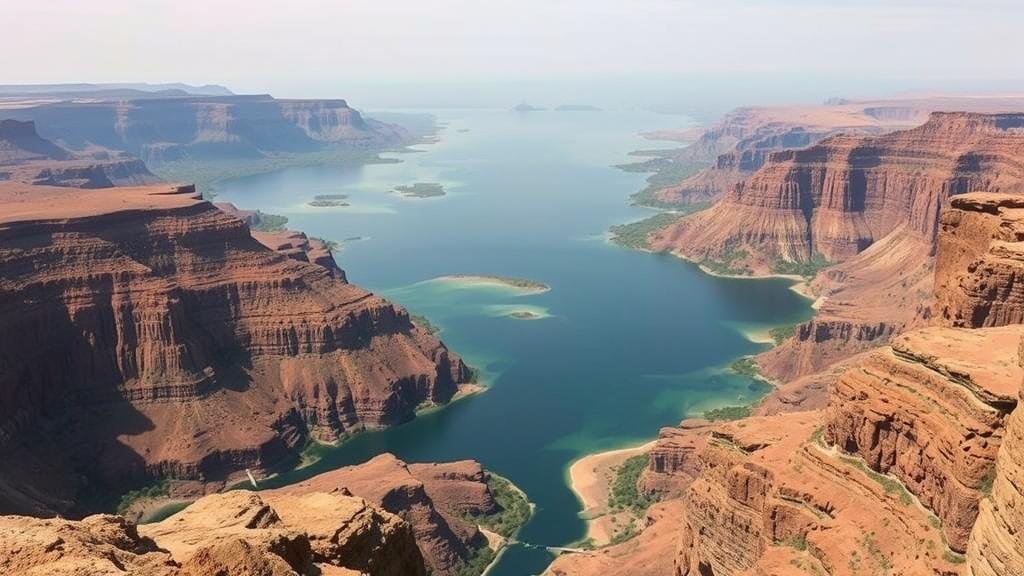Investigating reports of submerged cities in Africa’s Great Rift Valley lakes.
Investigating Reports of Submerged Cities in Africa’s Great Rift Valley Lakes
The Great Rift Valley, a geological marvel stretching over 6,000 kilometers, is home to some of Africas most significant lakes, including Lake Victoria, Lake Malawi, and Lake Tanganyika. Amidst the stunning landscapes and unique ecosystems, intriguing reports have surfaced about submerged cities beneath these waters. This article delves into the mystery of these alleged underwater settlements, exploring historical accounts, scientific investigations, and cultural implications.
Historical Context of the Great Rift Valley
The Great Rift Valley is not only remarkable for its geological features but also for its rich history of human habitation. Dating back to the Paleolithic era, this region has seen the rise and fall of various civilizations. Notably, the Kingdom of Axum, which thrived between the 1st and 7th centuries AD, was located at its northern end, while the Kingdom of Nubia emerged along its edges.
As climate changes and natural disasters have often reshaped ecosystems and habitats in this area, the stories of submerged cities can be traced back to local legends and archaeological findings.
Reports of Submerged Cities
Several lakes in the Great Rift Valley have been at the center of attention regarding submerged urban settlements:
- Lake Victoria: While primarily known for its fishery resources, Lake Victoria has sparked accounts of ancient towns lost to flooding.
- Lake Malawi: Reports indicate that this lake may hide remnants of villages that were engulfed by rising waters.
- Lake Tana: This lake has legends of a city called Bahr El Jebel that lies beneath its surface, said to be the remnants of a prosperous culture.
Local fishermen and divers occasionally report sighting structures and artifacts during their activities, lending credence to these stories.
Scientific Investigations
To explore these claims more rigorously, researchers have employed various technological methods. Sonar mapping, underwater archaeology, and sediment core analysis have all played pivotal roles:
- Sonar Mapping: This technology has allowed scientists to create detailed maps of the lakebeds, revealing potential structures that may be related to ancient settlements.
- Underwater Archaeology: In some cases, archaeologists have explored areas below the surface to uncover artifacts and remain evidence of human activity.
- Sediment Analysis: Core samples from lakebeds provide context for climatic changes over time, helping researchers understand how and when these areas may have been submerged.
A notable study in 2019 involved sonar surveying in Lake Tana, where researchers identified unusual formations that are believed to be man-made. While they have yet to confirm their findings definitively, the evidence suggests that further investigation is warranted.
Cultural and Social Implications
The existence of submerged cities carries significant cultural and social ramifications for local communities. These stories may serve as a link to collective histories and identities that emphasize the importance of preservation. Also, they offer opportunities for tourism, potentially uplifting surrounding economies.
Local legends surrounding submerged cities often become focal points for community gatherings and cultural expressions, further intertwining the significance of these accounts with the social fabric of the region.
Concerns and Future Investigations
While the allure of discovering submerged cities is enticing, it brings forth concerns regarding environmental impacts and conservation. interest in underwater archaeology demands careful consideration to preserve the fragile ecosystems that exist in these lakes.
Governments and research bodies need to collaborate to ensure that explorations are conducted responsibly, protecting both historical sites and local wildlife.
Actionable Takeaways
- Encourage responsible tourism that supports local economies while preserving natural habitats.
- Support scholarly research initiatives focused on the Great Rift Valleys underwater archaeology.
- Engage communities in preservation efforts as a means to maintain cultural narratives linked to submerged cities.
As our understanding of the Great Rift Valley deepens, the potential for uncovering submerged cities remains an enticing prospect. Continued research combined with community engagement may help illuminate this hidden chapter of Africas history, connecting the past with the vibrant cultures that exist today.



